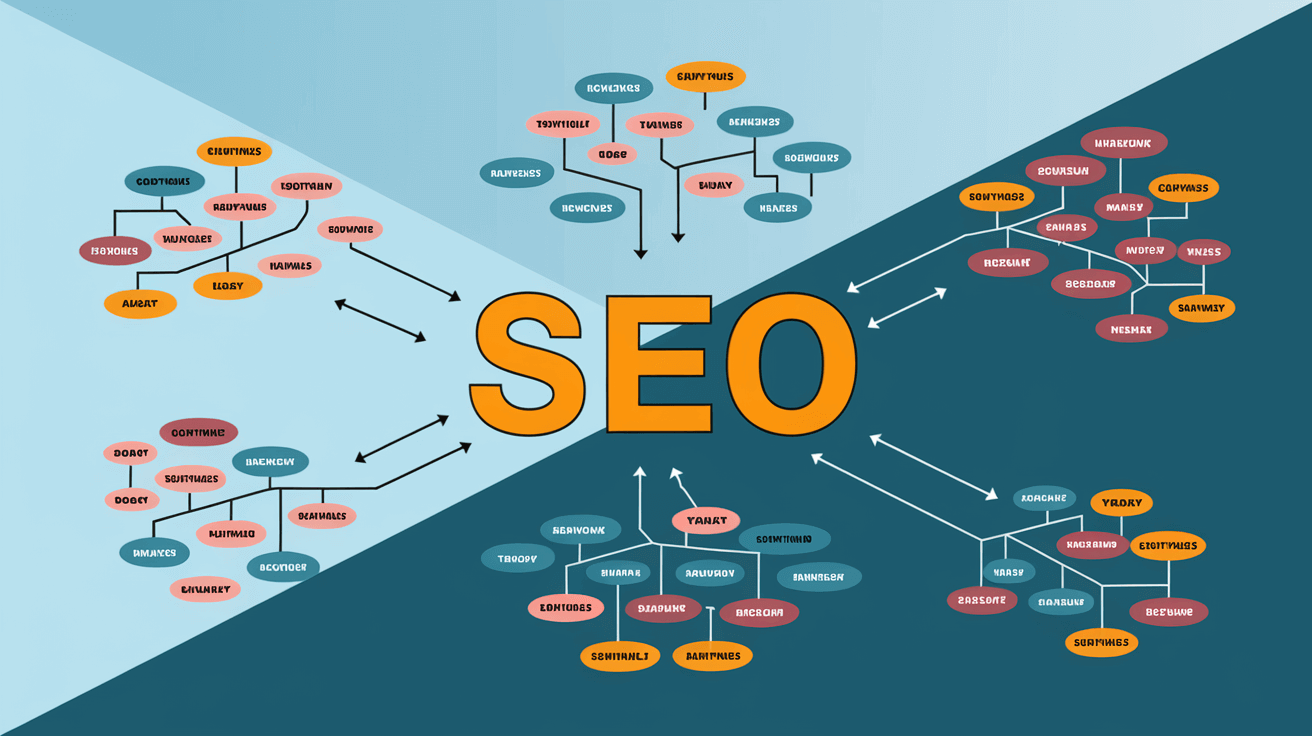SEO Best Practices to Boost Google Rankings – A visible online presence is vital for any modern business or personal site. Leveraging search engine optimization (SEO) to improve website discoverability and authority should be part of any digital strategy.
LinkWhisper
The ultimate internal linking plugin for WordPress that can elevate your on-page SEO. Recognized as the finest in the field. Simple to install with powerful features.
This SEO guide outlines research-backed best practices websites must follow for higher rankings and sustained growth.
Core standards cover optimizing page speed, enhancing content quality, building credible backlinks and tracking analytics.
Adhering to Google’s complex ranking factors through technical audits and site improvements can securely elevate your search visibility and clicks over time.
Essentially, vigilant SEO separates thriving sites from those languishing in obscurity.
Our checklist aims to protect your online presence by raising awareness of what impacts search rankings right now.
Treat SEO as an ongoing process rather than one-off tactic for lasting benefits.
The following guide outlines 10 SEO best practices, serving as a prudent strategy for those seeking to establish a safe and secure digital footprint. These practices include:
Key Takeaways on SEO Best Practices
Hide- Early integration of main keyword enhances coherence and relevance signals
- Unique titles, descriptions, and content influence visibility and ranking
- Site loading speed affects search engine rankings and user experience
- Google Search Console offers insights into search traffic and indexing status
- Judicious keyword integration
- Crafting unique content
- Refining technical elements of your site for optimal performance
- Strategic internal linking
- Exceptional content publication
- Cultivation of authoritative backlinks
By employing these methodologies, one can significantly improve their site’s user experience, fostering a trustworthy and efficient online environment for visitors.
These practices are fundamental for those aiming to achieve and maintain a competitive edge in the ever-evolving landscape of internet search rankings.
What are SEO Best Practices?

SEO best practices are a foundational component of any successful digital marketing strategy. They focus on optimizing a website’s visibility and organic search results.
One strategic move is to incorporate the main keyword early in your content. This helps search engines understand the topic of your page.
Crafting unique titles and descriptions is also important. These elements can influence click-through rates and improve the chances of your page being clicked on in search results.
Another factor to consider is site loading speed. Studies have shown that faster-loading websites tend to have better search rankings.
In addition to these strategies, consistent monitoring is crucial. Tools like Google Search Console provide actionable insights into your website’s performance.
They can help identify issues and areas for improvement, such as broken links or crawl errors.
By staying on top of these insights, you can make ongoing optimizations and track the performance of your website over time.
1. Add Your Main Keyword Early On In Your Content
Incorporating your main keyword early in your content is a cornerstone of SEO best practices, ensuring that search engines can quickly ascertain the topic of your webpage.
This strategic placement aligns with critical SEO principles, which dictate that prompt keyword introduction enhances the coherence and relevance signals to search engine algorithms.
In website SEO optimization, the early integration of the primary keyword contributes to a structured approach, laying the groundwork for subsequent search engine optimization techniques.
Data-driven analysis consistently supports this tactic within the holistic framework of how to optimize SEO, emphasizing its significance in achieving optimal rankings.
This practice not only complies with safety-conscious SEO guidelines but also sets a solid foundation for the next step in the optimization journey: to write unique titles, descriptions, and content.
2. Write Unique Titles, Descriptions and Content
Crafting a website’s unique titles, meta descriptions, and content is a pivotal SEO best practice that directly influences its visibility and ranking on search engine results pages.
Employing best SEO practices necessitates a strategic approach to content creation, ensuring that each component is not only unique but also meticulously aligned with the user’s search intent.
The art of SEO optimization for a website involves optimizing SEO elements to stand out amongst vast digital information.
A data-driven SEO practice includes analyzing search trends and competitor content to inform the creation of distinctive titles and descriptions.
By optimizing SEO through unique and relevant content, a website can effectively communicate its value proposition to both users and search engines.
Moving forward, let’s delve into how to optimize your title tag for SEO.
3. Optimize Your Title Tag for SEO
An effective title tag should incorporate precise keywords and be limited to a maximum of 60 characters to ensure full visibility in search engine results.
When delving into SEO website optimization, the strategic placement of targeted keywords within the title tag is paramount.
This method adheres to established SEO standards, which dictate that a title tag is a critical factor in optimization SEO efforts.
A data-driven approach to SEO optimization website practices suggests that title tags directly influence click-through rates, impacting overall site performance.
To optimize effectively, analyze keyword relevance and search volume to align with user intent.
Prioritizing clarity and conciseness in title tags not only aids in search engine recognition but also fortifies the site’s security against irrelevant traffic, supporting a safe and targeted user experience.
Use our own SEO Meta Tags Generator and Google SERP Preview Tool to test and optimize the most important meta tags and preview how they will display on Google SERP.
4. Optimize Your Site’s Loading Speed
While optimizing title tags is crucial for SEO, enhancing your site’s loading speed is equally imperative, as it significantly affects search engine rankings and user experience.
A data-driven approach reveals that page speed is a direct ranking factor, underscored by Google’s inclusion of site speed in its search algorithms.
Strategically, a faster loading website provides a safer and more secure user environment by minimizing the risk of cyber threats that can exploit longer loading times.
Analyzing performance metrics and optimizing images, leveraging browser caching, and reducing server response time are proactive steps in refining site speed.
Precisely executed, these tactics ensure a robust, user-friendly platform, fostering trust and encouraging longer engagement, which is a cornerstone of SEO efficiency and effectiveness.
5. Track Your Results With The Google Search Console
To effectively gauge the success of your SEO strategies, utilize Google Search Console as a comprehensive tool for tracking website performance metrics. This data-driven platform offers strategic insights into:
An analytical approach to these metrics ensures the safety and integrity of your website’s SEO performance. By consistently monitoring these parameters, you can refine your strategies for maximum effectiveness.
Analyzing trends and making evidence-based adjustments fosters a secure and sustainable growth in search rankings.
As you continue to enhance your site’s SEO, consider the next crucial step: optimizing images for SEO, which can further improve your site’s visibility and performance.
6. Optimize Images for SEO
Consistently optimizing images is a critical aspect of SEO best practices that can significantly enhance your website’s visibility and loading speed.
A strategic approach involves selecting the correct file format and compressing images without sacrificing quality, as large files slow down page load times, negatively impacting user experience and search ranking.
Data-driven decisions come into play with the use of descriptive, keyword-rich file names and alt text, making images more discoverable to search engine algorithms.
Furthermore, ensuring all images are responsive, so they adapt seamlessly to various devices, further optimizes SEO potential.
Adhering to these practices not only improves site performance but also fortifies the website’s safety by maintaining a swift and secure user experience.
7. Use Internal Linking
Internal linking strategy serves as a bridge between optimizing visual content and enhancing the navigational structure of a website, crucial for both user experience and search engine indexing.
Strategic Approach to Internal Linking:
- Anchor text relevance: Utilizing descriptive keywords that align with the linked page’s content.
- Link distribution: Ensuring high-value pages receive appropriate link equity.
Analyzing internal link structures with a data-driven mindset reveals pathways for search engines to crawl and index content efficiently, while simultaneously guiding users to safety-relevant information.
Strategic placement and the judicious use of internal links can significantly influence a site’s authority and ranking potential, without compromising the user’s sense of security.
As we weave the web of internal connections, the next step is to publish amazing content that anchors these links.
If you’re using WordPress, you can do internal linking automatically using LinkWhisper.
8. Publish Amazing Content
While establishing a robust internal linking structure is vital, it is the publication of exceptional content that truly elevates a website’s SEO performance.
Engaging, valuable content is paramount as it attracts and retains visitors, encouraging longer dwell times and lower bounce rates, which are positive signals to search engines.
A strategic approach to content creation involves meticulous keyword research and market analysis to ensure relevance and competitiveness.
High-quality content must also be original, providing insightful information that stands out in the vast sea of online data.
Additionally, it should be structured for readability and optimized with meta tags that accurately reflect the content’s subject matter.
9. Build Backlinks To Your Website
Building high-quality SEO backlinks is a critical ninth step in SEO best practices, as it signals to search engines that other reputable websites validate your content’s credibility and relevance.
In creating a backlink strategy, it is essential to analyze and pursue links that offer real value.
Strategic Backlink Acquisition:
- Guest blogging on authoritative sites
- Reaching out for inclusion in industry directories
Data-Driven Analysis:
- Monitoring backlink profiles using SEO tools
- Evaluating the domain authority of potential link sources
An analytical approach to building backlinks involves rigorously assessing the potential impact of each link on your site’s search engine ranking, ensuring that every backlink contributes positively to your SEO efforts.
Moving forward, enhancing your site’s user experience is another strategic move to bolster SEO.
10. Improve Your Site’s User Experience
Because user experience significantly influences search engine rankings, enhancing your website’s interface and usability is a pivotal tenth step in adhering to SEO best practices.
A data-driven approach to UX improvement starts with analyzing user behavior metrics such as bounce rates, time on site, and pages per session, which are indicators of user satisfaction.
Strategically, one must ensure that site navigation is intuitive and that content is easily accessible, aiming for a seamless interaction.
Prioritizing mobile responsiveness is also critical, as a significant portion of users now access the web through mobile devices.
Furthermore, ensuring website security through HTTPS is essential for user safety—a factor that search engines consider as a ranking signal.
Final Thoughts: Follow the SEO Best Practices to Boost Google Rankings

In conclusion, SEO best practices encompass a series of strategic, data-driven methodologies aimed at enhancing the visibility and ranking of web pages in search engine results.
Employing these practices effectively requires a deep understanding of search engine algorithms, the thoughtful integration of keywords, the optimization of content relevance and quality, and a commitment to ongoing analysis and adaptation.
Through the rigorous application of these principles, websites can achieve improved search performance and user engagement.




